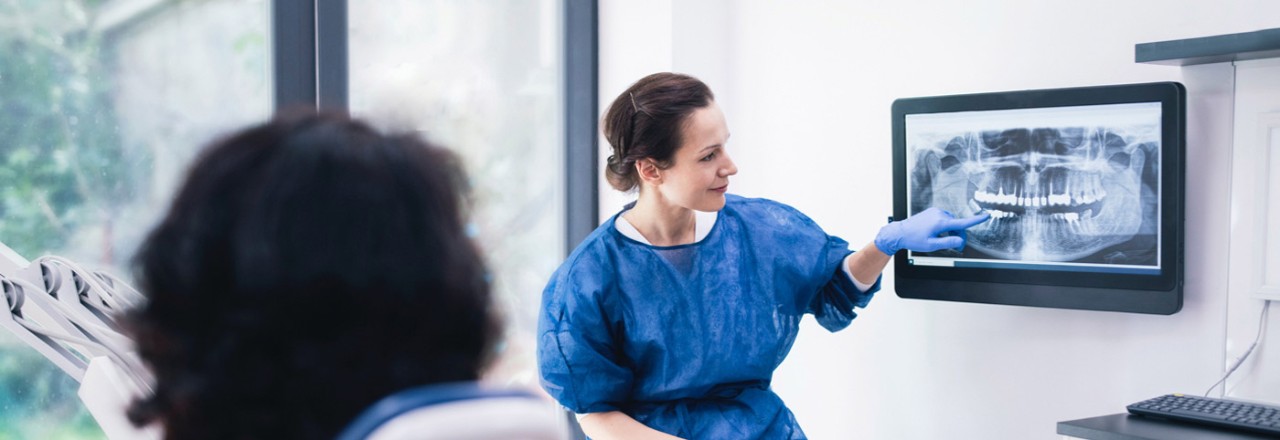How your dentist can detect osteoporosis
Your dentist may recognize the early stages of osteoporosis.

Your dentist may be the first health professional to suspect you have osteoporosis. This bone disease can weaken bones by reducing their density and is most common in women over age 50.
Osteoporosis is difficult to detect, and most patients remain undiagnosed until their bone density decreases to the point that a fracture occurs. However, your dentist may notice symptoms of tooth loss or gum disease that indicate the early stages of osteoporosis.
-
10 million
Approximately 10 million Americans have osteoporosis.
-

Signs of osteoporosis
Your dentist may detect the first stages of osteoporosis based on a review of your medical history and the results of a clinical and x-ray exam. Your medical record provides information about risk factors such as genetics, calcium deficiency, tobacco use, menopause, excessive caffeine or alcohol intake and an inactive lifestyle. In addition, several other signs may alert your dentist to the possibility of osteoporosis:
- Bone loss in the jaw and around teeth. Year-to-year comparisons of dental x-rays may indicate a decrease in jawbone density and the bone around your teeth, revealing advancing stages of the disease. This may be an indication of bone loss in other parts of the body as well.
- Tooth loss. If you have low bone mineral density, you’re more likely to lose teeth.
- Loose or ill-fitting dentures. Bone loss may become so severe that dentures can’t fit properly.
- Gum disease. This condition contributes to bone loss and may provide a clue to the diagnosis of an underlying condition such as osteoporosis.
Tips on preventing osteoporosis
Osteoporosis may be preventable with these lifestyle changes:
- Get more calcium. Eat more calcium-rich foods, such as dairy and almonds, or take supplements. Women should get 1,200 mg and men should get 800 mg daily. This number increases to 1,500 mg for both men and women over age 65.
- Add more vitamin D to your diet. Sunlight is the easiest way to increase your vitamin D levels, but eggs, salmon and mushrooms are also good sources.
- Exercise. Weight-bearing and muscle-strengthening exercises are especially helpful in combating osteoporosis.
- Quit smoking. Smokers are more likely to develop osteoporosis than non-smokers. Recovering from fractures is also more difficult.
- Decrease your caffeine and alcohol intake. Both caffeine and alcohol have been shown to decrease bone density.
If you or your dentist suspect you have osteoporosis, talk to your primary health care practitioner as soon as possible. Early intervention is the key to managing both your oral and overall health.
Last updated July 21, 2021
Related articles:
The oral health information on this website is intended for educational purposes only. Always consult a licensed dentist or other qualified health care professional for any questions concerning your oral health.


